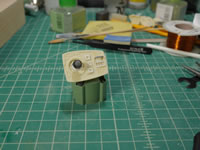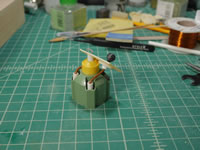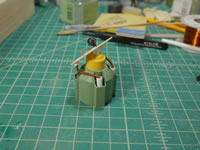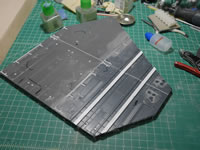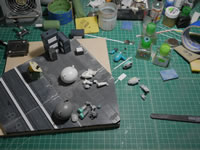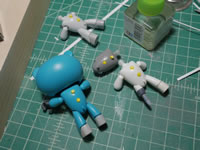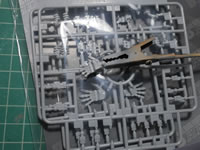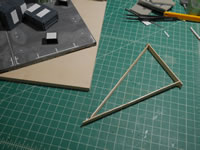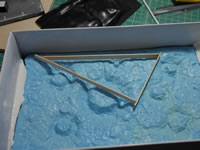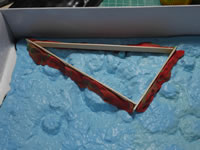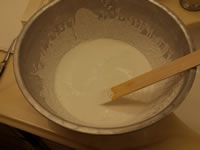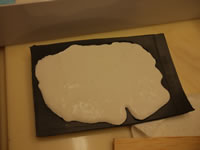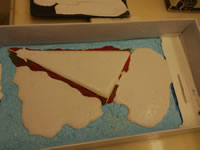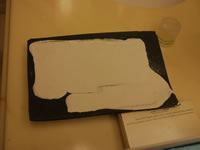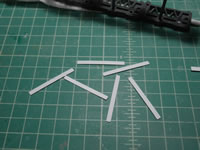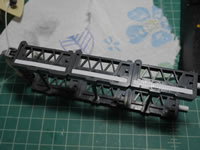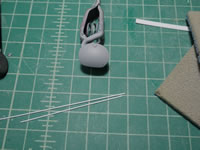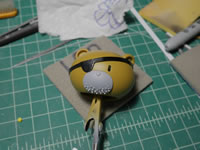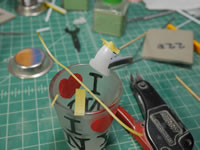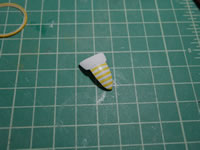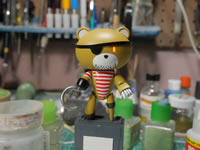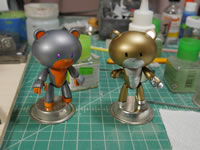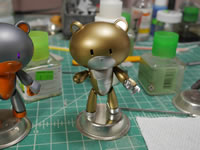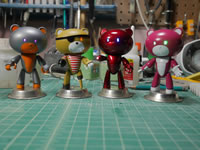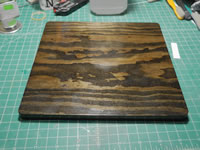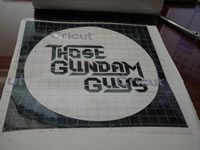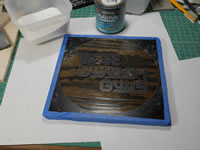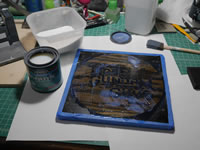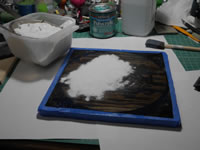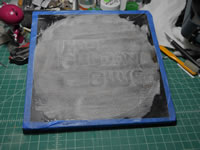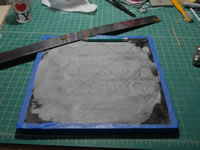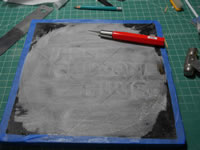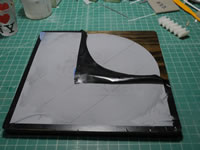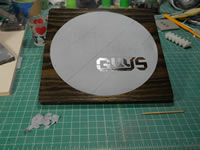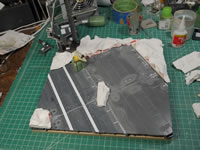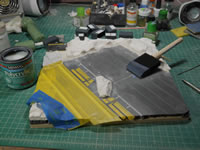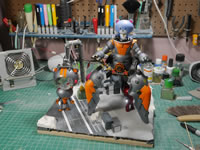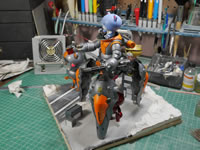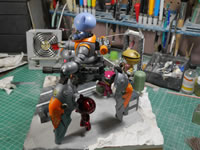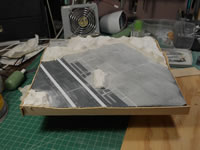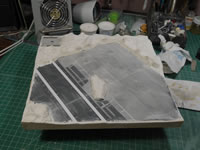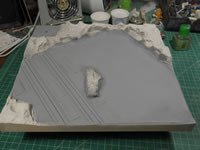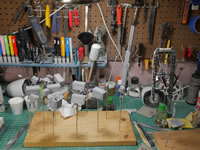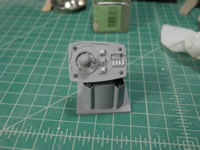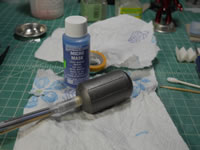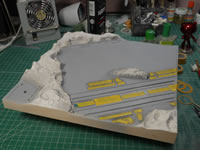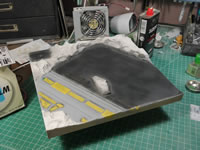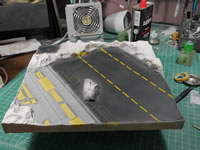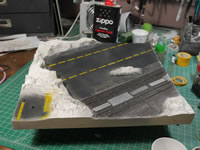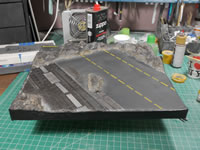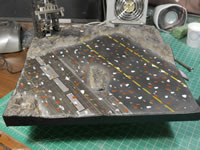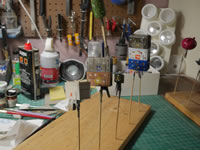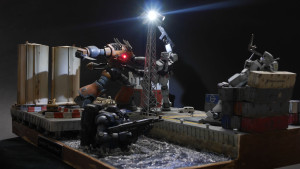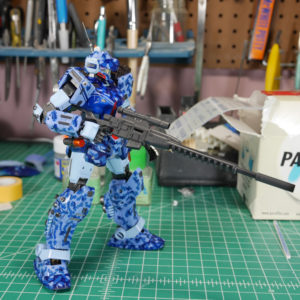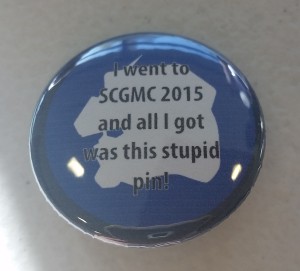The kit has been done for a few weeks now, this update just finishes the base I had started when I needed a break from cleaning up and fixing the resin binders. I touched on a few things on the last update with the basics of the base, but other than just slapping things together, I didn’t do any focused work since I felt the best thing was to just power through and finish the monster first.
Returning to this full time since that kit was done, I finished up the detailing for the control panel. I use the cricut to make some button templates and started to glue in some detail bits. More parts from the ball kit to create the lever. I used some styrene tubes and made more magnet wire wrapped cables that I glued into position. And this part is ready for primer.
The rest of the base works after the jump.
I originally measured out and cut the base plastic bits on a 12×12 raised wood box. That gave it a lot of unnecessary height since the damn BG kit was fairly tall, so I needed to find a different solution. I picked up a thin plywood board 12×12 board that worked perfectly with what I started. The plastic part of the base is getting filled and sanding work is in high gear to clean up the holes on the board. These bases are nice, and I understand the need for the holes to stick things in that whole world of snap fit. But as a model builder, these holes just take away from the effect if they’re used in a diorama. I used left over spruce bits to glue into place and styrene bits to fill in the more rectangular holes.
The bear guys are taken apart and the seams glued as well as the holes in the back of them filled with more left over plastic sprue.
These holes work to fit the little guys onto chairs or other snap fit things. Being standalone, these holes make no sense, so they are filled. Sprue bits and glue. The next picture is the hands that I used for most of the petits. It is just a modified version of the builder’s parts. I removed the end digits to make the hands stubby, so here’s a comparison with the original hands. Thanks again to reddit for that suggestion.
The plastic base is glued to the wood board so I can start working on filling the negative areas with plaster craters and rocks. In a short sighted moment of brilliance, I made a wood frame measured out so I can make a mold. This all makes sense to me until I demold the damn thing. But that comes later. The frame is laid against a silicone mold I made years ago of a plastic crater sheet. Playdough is lined along the bottom edges to keep the frame in place and keep the plaster from flowing out under the frame.
The plaster I use is called hydrocal and mixes with water which then hardens rather quickly and depending on relative temperature and humidity, will cure in a day or two. So from the pictures, when I flipped over the framed plastic piece, it doesn’t fit because I should have made a mirror image of the space I was trying to fill. I’m using the bottom of the mold not the top. Fail all around. Almost.
This post will jump around because it’s just how I worked these last week and a half. The crane frame was build hastily so there are some much needed attention to fixing or just hiding some of the bad things about these parts. I used the cricut to design and cut out perfectly sized groove styrene to help hide the holes where I bridged the two parts to form the main frame. The insides get some detail parts to cover these unsightly holes.
Back to the pirate petit. To add to the pirate theme, I wanted to give him some stubble. I didn’t want to just paint in stubble, I wanted a little dimension to it, so I marked off the face and glued in plastic bits to create the stubble.
The chest of the pirate is masked off and painted in red and white. The face piece is painted and stubble highlighted, everything goes back together and I have a more pirate, pirate petit.
The other petits are not ignored. Each has their own color scheme. The real “pilot” is painted in the same colors as the main suit and hence the motorcycle helmet is meant for him. The inspector petit is painted in alclad polished brass and aluminum. Clear red is painted over that guy to get a candy red with darker tones on the main body and lighter tones on the highlights. It didn’t really work out too well since I had all the parts together when I sprayed the clear. In hindsight, I should have separate the parts out and had better control to do a lighter tone over the aluminum parts. But the petit crew is done, almost. I still need some detail painting and the clears and maybe some deckals.
I was trying to finish the project for AX, but I also know that life throws shit at the most unexpected moments. So I spent some time to prepare a simpler back up display base. I started with a wood base that I also picked up when I got the new lower profile plywood base. This was stained and clear glossed days ago. I was going to mask off a square and do up a quick little tarmac on top but the idea to tweak that popped into my head. Going back to the cricut machine, I designed a mask using vinyl tape. I created a circle and inside, I added our TGG logo. The vinyl is cut and I removed the excess from the main sheet. Over this, I used cricut vinyl transfer tape and transferred the designed to the wood base. Excess on the sides are masked off with blue painters tape.
The next steps are just the creation of the tarmac. An acrylic medium is spread over the exposed wood areas. Baking soda is shifted over the base and then I have a whole lot of cocaine. Once that dries, I brushed off the excess back into the box of soda. A quick sand helps even some of the rough edges.
The ruler and scriber come out to cut in some grooves into the surface to accent the tarmac feel. Once scribed, the base is sprayed with primer. Once the primer dries, the mask is carefully removed.
Vinyl sticks better than masking tape, so some care in removal are needed lift up the mask. But once done, I have my backup display base. That I apparently forgot to take a completed picture.
All the while, I’m still working on the main display base. The plaster pieces have dried and I can start assembling them on the base to see where things fit. The pieces are not an exact fit, but I can use paper clay or even more plaster to transition between different pieces and onto the board itself. The plaster is glued to the surface and paper clay is used to fill in any gapes between the plaster as well as between the plaster and the board. I apply the tarmac technique to the base and mask off areas that do not get the effect.
The tarmac is partially done so time for another test fitting with all the principal players to see how everything fits. I need photos so that while I continue to work, I don’t forget where I position the pieces. This are starting to take form. I may finish this in time.
Here’s the reference picture without the petits or the main kit. Again, this is so that I know where to continue my build.
The first picture is the base with a balsa wood border glued into position. This helps hide all the ugliness of the raised platform ad just give a nice border to the diorama. The edges of the wood and the base have gaps that need filling. I mixed up some plaster and just filled the gaps with the plaster. Wood filler is used to fill in any gaps on the wood side of things. In the second picture, the lower left corner has wood filler. The edges are sanded and touch ups are done. The final picture is just the flat areas on the base primed.
Speaking of primer, time to prime the rest of the detail bits; shipping containers, crane, control panel and water tower. I used the glue + tooth brush cast iron surface technique to create the texture on the water tower. After priming, a layer of alclad steel is painted. Once that is all cured, I applied some liquid mask so I can create a weathered paint chipped look to the part.
Metallics are painted on the base and then masked off so that I can paint in the main color for the tarmac. I used german grey for the tarmac areas.
More mask and paint and mask and paint to get details and the rest of the base painted.
A series of washes paint up the craters to complete the base scene. But the surface looks too clean.
The last bit of work was to apply a filter to the surface as well as to the shipping containers. They were decaled and clear coated to protect the plastic as well as the decals. Dots of enamel white, rust, dark earth, and yellow are applied to these surfaces. They are then wiped away with a rough brush loaded with enamel thinner (lighter fluid) which weathered the surface nicely.
The project is still not done at the time of this posting. I’m still waiting for the clear light sheen clear coat to cure on the petits and control panel. The containers and crane are glued to the base and are still curing from the enamel filters. Later tonight I will spray a clear flat for those pieces and add some pastel weathering to finish things up. For those going to AX2018, see you all there, and you can check out the kit at the GBWC competition.
